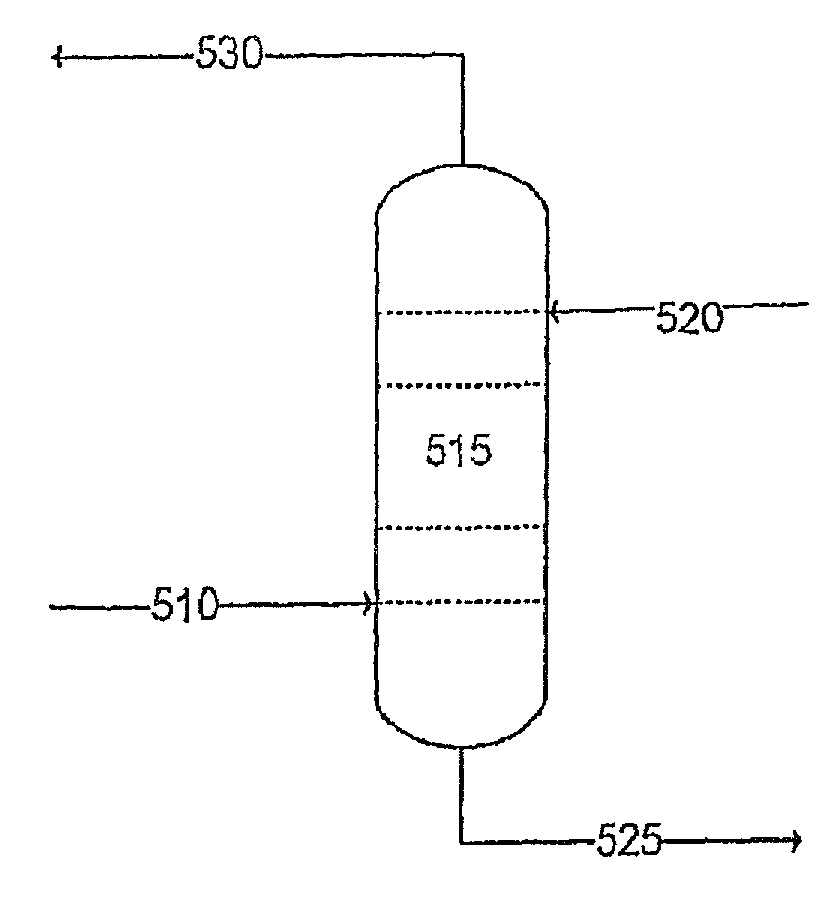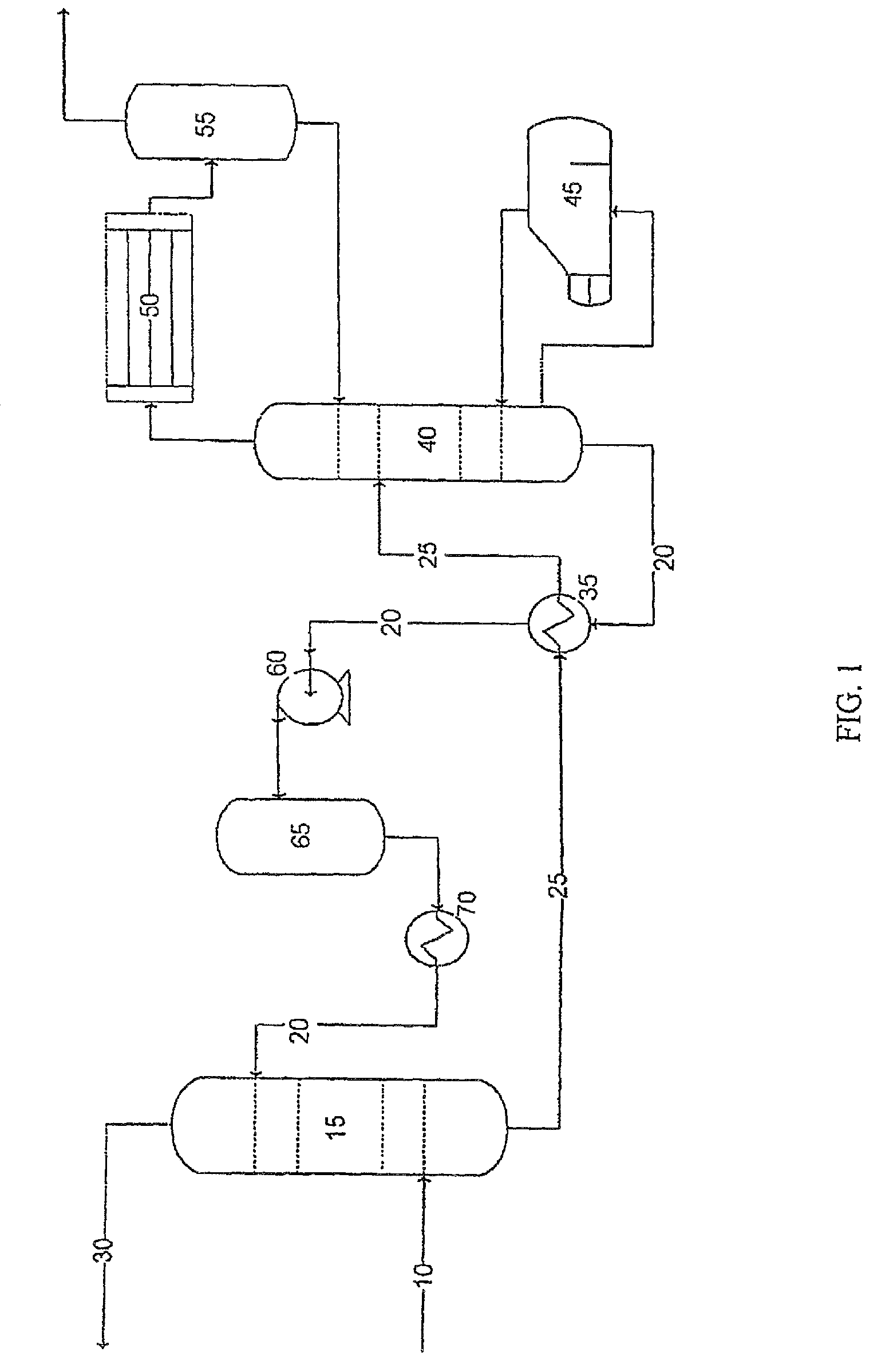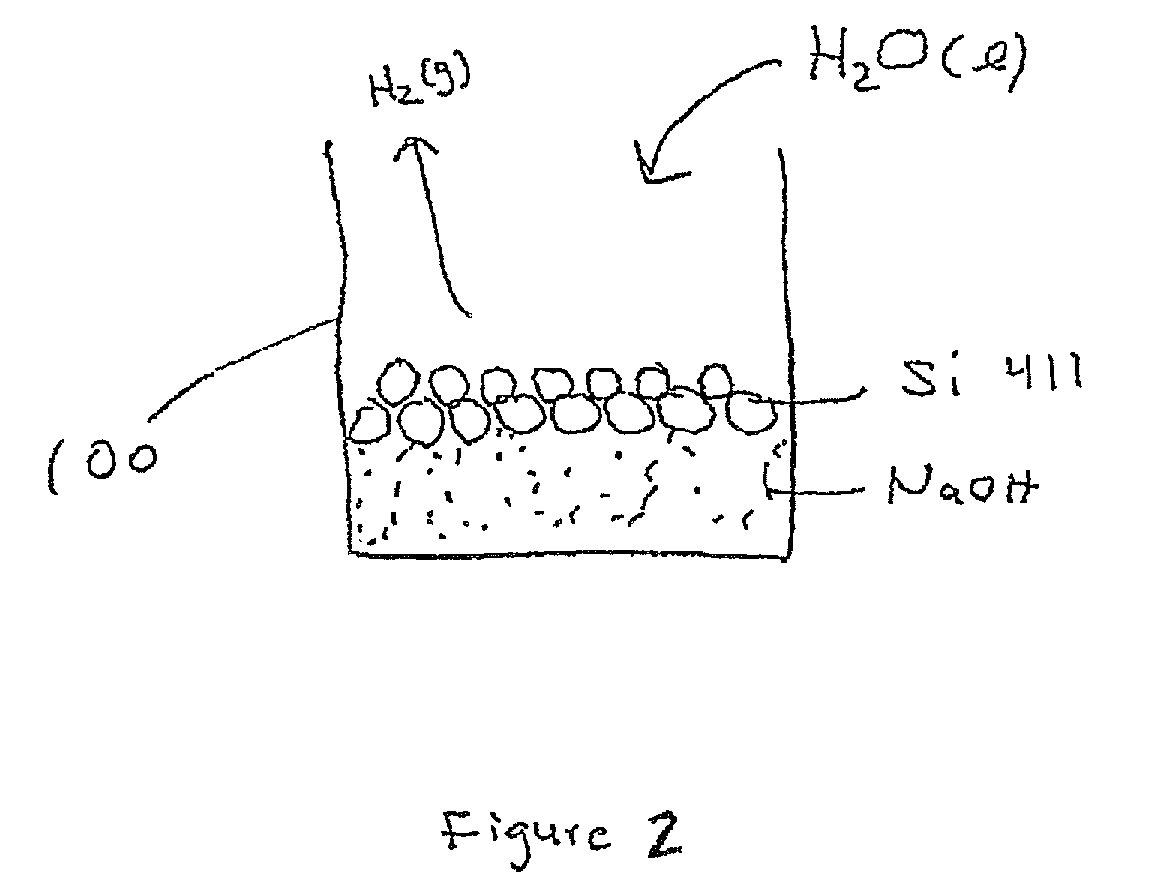Sour-gas sweetening solutions and methods
a technology of sulfur compounds and sweeteners, applied in the field of sour gas sweetening, can solve the problems of large damage to natural gas pipelines if not properly processed, sulfur compounds produce serious air pollutants, and are unsuitable for commercial use, so as to reduce the molecular weight and minimize the corrosion of process equipment
- Summary
- Abstract
- Description
- Claims
- Application Information
AI Technical Summary
Benefits of technology
Problems solved by technology
Method used
Image
Examples
example 1
[0084]As illustrated in FIG. 3, the absorption solution disclosed herein is used to treat a sour gas feed stream 410 containing 5 mole % H2S, 5 mole % CO2, and 90% natural gas. The natural gas component generally substantially contains methane, however, other gasses including but not limited to ethane, propane, butane, and pentanes can be present. Other impurities, such as nitrogen, water vapor, and / or helium can also be present. In this example, the natural gas contains approximately 1 mole % N2, 83 mole % methane, 4 mole % ethane, 1 mole % propane, 0.4 mole % butane, and 0.6 mole % water.
[0085]The amine solution comprises approximately 28% DEA in water. A silicon-containing compound, NaHSiO3, is combined with the amine solution to form an absorption solution 420 with a NaHSiO3 content (concentration) of approximately 400 ppm total silicon dioxide.
[0086]The sour gas 410 and lean absorption solution 420 enter the absorption tower 415, which is approximately 3.5 feet in diameter, ope...
example 2
[0094]The absorption solution described herein can also be used to remove H2S present in gases other than sour natural gas. In fact, the absorption solution disclosed herein can be used in any industry in which amine-based sulfur extraction is appropriate. For example, the silicon-containing amine solution (absorption solution) disclosed herein is used to extract H2S from synthesis gas, or “syngas.” Syngas results from the gasification of solid organic-based products, including coal and petroleum coke. As these feed materials often contain significant amounts of sulfur, H2S is a common product of the gasification process. As a result, amine-based sulfur recovery techniques are often employed. Accordingly, use of the absorption solution disclosed herein can provide for enhanced sulfur recovery and can also decrease the maintenance costs and capital costs that result from corrosion and foaming problems.
example 3
[0095]With reference to FIG. 4, the absorption solution 520 comprising a silicon-containing compound and an amine-containing compound is directed into an absorber 515. The absorption solution 520 contacts the sour gas 510 in the absorber 515 and removes the H2S from the sour gas 510. The absorption solution 520 can also remove CO2. As those of skill in the art will appreciate, the selectivity of the absorption solution 520 will vary depending upon several factors, including the type of amine-containing compound used in the absorption solution. That is, the amine-containing compound can be chosen to absorb greater or lesser amounts of H2S and / or CO2.
[0096]The rich solution (i.e., absorption solution comprising H2S and / or CO2, in addition to other impurities removed from the sour gas) 525 is then directed to an absorption solution regeneration system (see FIG. 4). The sweetened gas 530 is directed to a storage unit, for example. In some embodiments, a fraction of the sweetened gas 530...
PUM
| Property | Measurement | Unit |
|---|---|---|
| temperature | aaaaa | aaaaa |
| temperatures | aaaaa | aaaaa |
| pressure | aaaaa | aaaaa |
Abstract
Description
Claims
Application Information
 Login to View More
Login to View More - R&D
- Intellectual Property
- Life Sciences
- Materials
- Tech Scout
- Unparalleled Data Quality
- Higher Quality Content
- 60% Fewer Hallucinations
Browse by: Latest US Patents, China's latest patents, Technical Efficacy Thesaurus, Application Domain, Technology Topic, Popular Technical Reports.
© 2025 PatSnap. All rights reserved.Legal|Privacy policy|Modern Slavery Act Transparency Statement|Sitemap|About US| Contact US: help@patsnap.com



